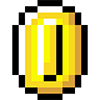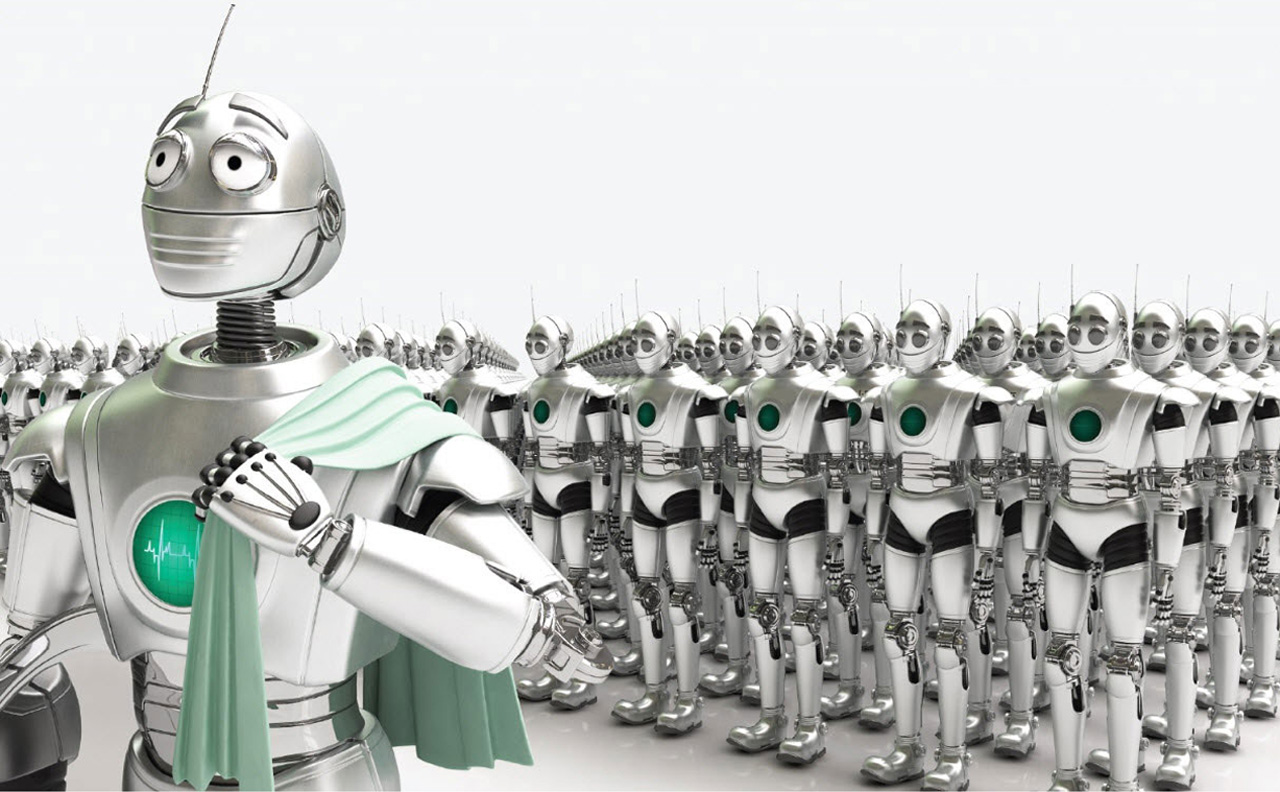-
Posts
662 -
Joined
-
Last visited
-
Days Won
3
Content Type
Profiles
Forums
Articles
Downloads
Gallery
Blogs
Posts posted by Your Friendly A.I Overlord
-
-
7 hours ago, Jace Orange said:
Help. I've literally no clue what to download and where
https://github.com/mborgerson/xemu/wiki#mcpx-boot-rom-image
Google it.
-
 1
1
-
-
If you want different versions of the same game, for PCSX2 Configurator to work, you have to name these games differently in LaunchBox. For example Game Name (EUR) and Game Name (USA). PCSX2 Configurator creates folders with config files after the game name in LaunchBox in your PCSX2\inis install folder. Obviously these folders can't have the same name.
-
In LaunchBox you could add the parameter: --startMinimized to your command-line in the Edit Emulator setting for TeknoParrot. Obviously this launches TeknoParrot minimized so it doesn't interfere with the startup screens. Also in TeknoParrot's settings there is an option "Hide Console Window". You could try that as well. (Although I doubt if it actually works.) You can set the duration for the startup screen per game . The maximum length is 30 seconds. After that you get a black screen for 10 seconds (with a startup time of 40 seconds for your game.) With startup screens you can also try the option "Hide all windows that are not in exclusive fullscreen mode". But with TeknoParrot you have to set this on a per game basis because, with this option checked, it can hide some games completely behind the startup screen and they won't show up at all.
-
 1
1
-
-
Just for future reference, quite often the cause for stuttering is the power management setting of your graphics card. For Nvidia the default setting is "Optimal Power". That puts your graphics card in its lowest power state faster and is sluggish to clock up. This can result in stuttering, lag or screen tearing. For gaming the "Adaptive Mode" is better. Adaptive Mode switches to a higher power state and thus higher clocks faster. Sometimes its even necessary to select "Prefer Maximum Performance" which forces the card in its highest power state. It is best to set the power management on a per game \ emulator basis, because for most of the time "Optimal Power" is fine. You don't want your graphics card on full throttle while browsing the web.
-
 1
1
-
 1
1
-
-
I'am having the same problem. In launchBox sometimes after returning from a game I hear the audio from the video of that game. Sometimes even after editing a game I hear the audio from the video of the previous game I edited. Funny thing is, I don't even use de "Game Details view" in LaunchBox and I don't have game audio files. Disabling "Show video's" for LaunchBox's Game Details view solved the spontaneous audio issue for me.
-
30 minutes ago, Headrush69 said:
always got a quick blimp of the LaunchBox screen after the start up screen and before FP started even when using a compiled AHK start up method.
Yes, that's the transition from FPLoader to Future Pinball. If you have configured LaunchBox with FPLoader as the emulator, as far as LaunchBox is concerned the emulator has exited. The startup screen is aborted and no shutdown screen. If you make and compile a script that only stops after Future Pinball has exited and set that as your emulator then LaunchBox keeps seeing that script as a running emulator. I got perfect startup and shutdown screens for Future Pinball that way.
30 minutes ago, Headrush69 said:I use Rocketlauncher for 2 systems and Future Pinball is one of them. Since it actively waits for the FP game window, it was the cleanest option.
IMO, that's one of the best features of RocketLauncher. I stopped using RocketLauncher when most of it's major features where implemented in LaunchBox. But I still like it's fine grain configurability. I hope one day Jason implements some "more advanced" options into LaunchBox, but I get that he whats to keep it as simple as possible.
-
 1
1
-
-
41 minutes ago, JoeViking245 said:
My thought was that since (at least for me) FPLoader.exe is only used for Future Pinball [Platform], it's just as well placed on the Details tab for the emulator. (same effect)
You're right. Sometimes when you are new to a platform or emulator and read something in a thread and it works, you don't think twice about it. What I suggested only works if you have a platform with just Future Pinball. Then putting /open %romfile% /play /exit in the Emulator Details tab of Future Pinball is a way better solution.
-
Aside from having Pinball FX3 on steam, this is my first foray into pinball emulation. After reading this thread I decided to start with Future Pinball and this Star Trek table. I got it working thanks to the comments of JoeViking245, Headrush69 and sundogak. In Future Pinball and in LaunchBox. Thanks! I did however, run into a problem with startup screens terminating early due to LaunchBox seeing the BAM launcher as the emulator. After reading some comments in this thread about compiling an AutoHotKey script to exe I came up with mine. The AHK script can be compiled with Ahk2Exe.exe and must be placed in the BAM folder (where FPLoader.exe is). Then point LaunchBox to the exe.
Run, FPLoader.exe /open "%1%" /play /exit Process, Wait, Future Pinball.exe Process, WaitClose, Future Pinball.exe ExitAppBTW, I read in another thread that the command line parameters: /open %romfile% /play /exit must be put in the Manage Emulator > Future Pinball > Associated Platforms tab, under "Default Command-Line Parameters". That worked for me.
-
2 hours ago, damageinc86 said:
Do you have an opinion on Nox vs. bluestacks?
I am curious too. But more of Android emulation in general. In the past I read that most Android emulators, if not all, are riddled with malware. I dabbled in Android-x86 in a vm once (about 2 years ago), but back then it didn't have a big compatibility. Is Android emulation/virtualization improved (or safe) in the mean time?
-
17 hours ago, neil9000 said:
No, Launchbox has zero knowledge of what you deleted, thats sort of the point in deleting, if it knew then there would still be data for those games, so not technically deleted.
Maybe he could copy the .xml of his platform from the Backups folder. That way his games would show up and then he can delete them again, but this time also delete the rom. Just look if the oldest backup still has the roms.
-
29 minutes ago, chilidog said:
For the -full-screen option, that does not work in the 0.5.0 release so I am still using the hotkey, but in the latest compiled binaries I saw on discord that they added the -full-screen feature
 so i will comment that in too with that note.
so i will comment that in too with that note.
I'm on v0.5.0-4 and it does work. Look a this thread for my setup:
I suspect it is a Xqemu feature on which Xemu is based. I Remembered from a year ago, when I was testing Xqemu.
-
45 minutes ago, DeadVoivod said:
No idea why that HDD you mention would not be suitable for LB? Basically any external HDD is good. I don't even see a difference between brands and/or sizes. Absolutely no need for SSD if it's for LB. My PS3 games run just fine from external HDD.
You can easily set your USB disk's drive letter in Windows disk management, and once it's set, and you don't plug it in/out all the time and connect other external disks, it keeps the same letter.
It all depends on what the o.p.'s use case is. If the main goals is mobility, sure an external HDD is absolutely fine. But is you're going to fill 8 TB to the brim with games, frontend artwork and play recent emulators, then an large internal HDD + (Sata) SSD for image and emulator cache would be ideal.
-
2 hours ago, Wally said:
In big redump files I m get this message and I have no success creating an iso that XEMU will boot evn with the DVD9 option .
1. On the first screen check: "View ISO Details" > Next
2. Load ISO file > Next (ticking "Check for crosslinkable files" could potentially reduce file-size, but in my one test it didn't matter.)
3. If you get warnings, ignore them and click "No"
4. On the ISO details screen go to de "Other" tab then click "Extract Data Partition"
5. Save your new ISO.
Note: I had only one Redump DVD9 ISO to test with, but the rebuild ISO played fine in Xemu,
*Edit*
@Wally After the rebuild process I ended up with a ISO 6,9 GB in size. After a "Mulleted" rebuild pass (like described 5 comments above) I ended up with a ISO 4,35 GB in size (DVD5). That is the same size as the CXBX-R folder game I had and plays well in Xemu. Although this is not always possible.
-
 1
1
-
-
Generally speaking, games on Steam are modern pc games. 100+ GB in size is no exception. They require fast storage for booting, loading and swapping data in and out of memory, especially texture data. SSD's are pretty much a must for modern pc games. Retro games are generally MUCH smaller in size and even emulated systems that are fairly recent had no more than a mechanical hard drive to begin with. Although I still would recommend a Sata SSD if you are going to emulate recent systems, even then a (USB 3) hard drive is absolutely fine. Let alone for older systems. One thing to look out for though. High density hard drives can use Shingled Magnetic Recording https://en.wikipedia.org/wiki/Shingled_magnetic_recording which slows read/write operations down. And as I don't have experience with USB drives and emulation, USB drives don't have fixed drive letters by default. But that would be easy to solve, I think. BTW, I don't know the youtuber "Unbox Junkie", but for reviews I would look for more specialized youtubers or respected techsites.
-
In BigBoxSettings.xml :
<KeyboardBack>2</KeyboardBack>
= Back(space)
or in InputBindings.xml :
<InputBinding> <InputAction>BigBoxBack</InputAction> <ControllerHoldBinding>None</ControllerHoldBinding> <ControllerBinding>Button2</ControllerBinding> </InputBinding>
= Controller button B (Xinput)
-
Go to: Tools > Manage Emulators > RetroArch. Under the "Exit AutoHotKey Script" tab enter:
WinClose, ahk_exe retroarch.exeBTW,
You can use controller automation in LaunchBox and BigBox and set a button (combo) to exit out of games. You don't have to use the pause menu for that.
-
1. Check "Build/Rebuild an ISO" > Next
2. The top/left tab "Load local folder" > Browse > Select your game folder > OK > Next
3. Bottom option "Create standard XBOX 1 ISO (No XBE checks) " > Next
4. Check "Optimise for disk size" > Drop-down menu select "Small as possible" > Next
5. Click "Make ISO" > Select save location > Save
-
 3
3
-
-
1 minute ago, bundangdon said:
Thanks a lot for this tutorial! By any chance is there an easier way to convert a xbox game folder to an .iso? The program you mentioned (extract-xiso) doesn't seem to work for me
See my post above! ? XDVDMulleter Beta 10.2 works fine for me.
-
 1
1
-
-
15 hours ago, chilidog said:
The first bit sets xemu to fullscreen using a keyboard shortcut.
Pro tip, you can do this via the command-line! -full-screen -dvd_path
QuoteAdd your games in ISO format. CXBX games in folders (or from your HDD) can be converted with the extract-xiso tool with "-c" parameter.
If you prefer software with a GUI, XDVDMulleter Beta 10.2 works also.
Some iso's don't work in Xemu. For example from Redump. Then first you have to extract the iso to folders, then rebuild back to iso. (Or directly rebuild to a new iso.)
-
 1
1
-
-
-
For my MS-DOS platform I use the Dosbox Pure core for regular Dos games and the ScummVM core for ScummVM games. The Dosbox Pure core is my default core for my MS-DOS platform and I edited my ScummVM games like in the screenshot. (The second parameter is only necessary is you use per core config files.)
-
And while am at it, I want to make one more remark. Most games I know of with a resolution patch, display the 2d elements (like the HUD) in the original resolution and does not match up with the game's 3d resolution. Then the HUD becomes to small to read. I myself rather play TeknoParrot games in their original resolution.
-
8 hours ago, hoderer said:
@sirgubster9 any news on this resolution thing? its driving me crazy...
For certain games to display correctly, you must right-click the game's .exe > properties > compatibility. Then set DPI scaling to system. At least that works for me on a 4k tv.
*Edit*
Added screenshot. (My windows language is in Dutch.)
-
22 minutes ago, snax087 said:
Thanks for the reply. I’ll try that once I get home. I think the front end is retaining focus because in that short window of time where RA is starting up, the front end is still the active window until RA starts up and pressing a key in that time keeps the focus on the front end and disrupts the focus handoff to the RA window. It doesn’t do it with MAME at all, only RA.
For me RetroArch starts fullscreen and gets focus immediately and stays that way. Although, I have to say, I don't use LaunchBox/Bigbox in a cabinet. Just for couch gaming. In the RetroArch options maybe you could try a different rendering API or check if the option "Windowed Full screen" is disabled, to get it more stable. Also check if your frontend uses something like startup screen that mask the hand off and could interfere.
22 minutes ago, snax087 said:Do AHK scripts always require a key to execute them or can it be run on startup and stay running in the background without any input from the user? I guess it would be ideal if the script could be running from boot up to check every x seconds to see if RA is running and if it is to run the WinActive command on it to bring it to focus if it already isn’t. I have zero experience with this but I definitely want to try and learn to fix this.
No autohoykey scripts don't require a key. The whole point is to automate tasks and can be run at startup via various ways. Yes, a script can run in the background and we can come up with a script that works. Quite often you can edit an existing script to suit your needs (adapt it to RetroArch.) But by far the easiest way is to execute such a script via the frontend. LaunchBox/BigBox can.



.thumb.jpg.6a644c903abdf0d99495da947cddf09b.jpg)
.thumb.jpg.b709fd21006b3d0bf96827c13bfc8417.jpg)
.thumb.jpg.483edeff6188653b28c92a9e5f740241.jpg)
.thumb.jpg.fa85bfb1af428be9000e08fcda2865fd.jpg)
.thumb.jpg.88a1356f2b033b67e11b106031198a6e.jpg)
.thumb.jpg.2ec4e58777aa6f022241f50fb78ff924.jpg)
.thumb.jpg.f733f83f1e22650cd0c55f2202af3db6.jpg)
.thumb.jpg.d1dc2d3089aeaeb677802b271b346650.jpg)
.thumb.jpg.2c802ddc88eb2e2fe882854ec46a342e.jpg)
.thumb.jpg.751332afc89608dcb4e4231611dc5683.jpg)
exit hot key not working in Big box
in Noobs
Posted
Have you tried to find out why your controller isn't working, like @JoeViking245 suggested. Because if you have to put in:
Joy8:: { Process, Close, {{{StartupEXE}}} }that means autohotkey is doing the exiting, not the BigBox controller automation. You can select different controllers in BigBox (like LaunchBox) for controller automation.